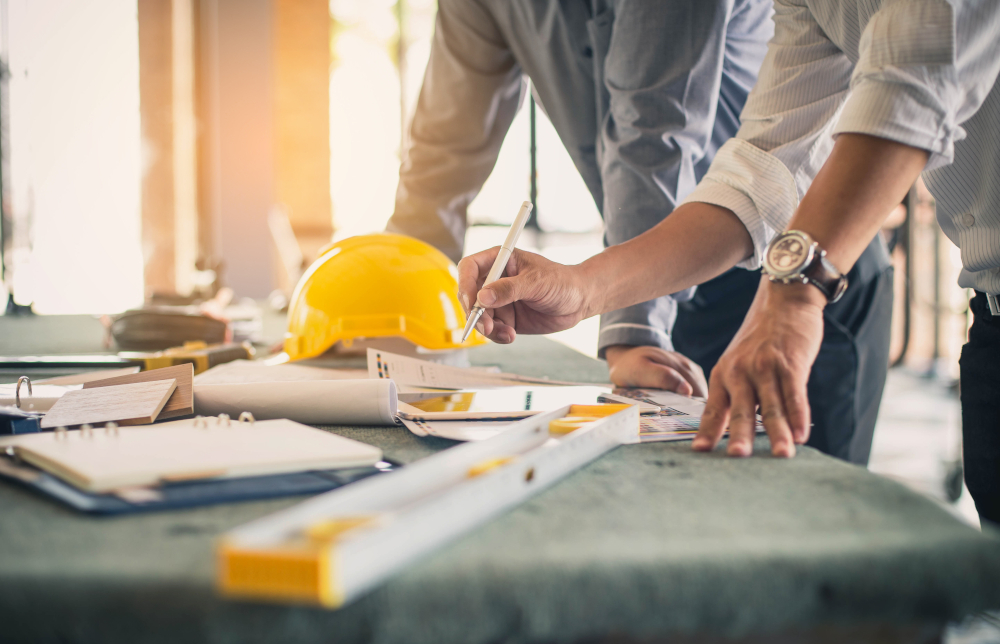Unlocking Employee Morale and Performance through Office Fit-Outs
- Written by Telegraph Magazine

In the contemporary landscape of business, where competition is fierce, and talent is highly sought after, fostering an environment that promotes employee morale and enhances performance has become paramount for organisational success.
One often-overlooked strategy in achieving these goals is through professional office fit-outs – the process of redesigning or refurbishing office spaces to better suit the needs of the workforce. By strategically designing work environments, companies can positively impact employee morale and overall performance in significant ways.
The Impact of Office Environment on Employees
The office environment plays a pivotal role in shaping employee attitudes, behaviours, and performance levels. A well-designed workspace can cultivate a sense of belonging, collaboration, and productivity, while a poorly designed one can lead to dissatisfaction, stress, and reduced efficiency. Factors such as lighting, layout, furniture, colour schemes, and amenities all contribute to the overall ambience and functionality of office space.
Enhancing Morale through Office Fit-Outs
Creating Spaces for Collaboration: Open-plan layouts, breakout areas, and collaborative zones can facilitate teamwork, idea-sharing, and spontaneous interactions among employees. By promoting a sense of community and inclusivity, employees feel valued and connected to their peers and the organisation as a whole.
Prioritising Comfort and Well-being: Ergonomic furniture, adjustable workstations, and designated relaxation areas contribute to employee comfort and well-being. When employees feel physically comfortable in their workspace, they are better able to focus, stay motivated, and avoid burnout.
Personalising Workstations: Allowing employees to personalise their workstations through customisable desks, decorations, and seating arrangements fosters a sense of ownership and identity. Personalisation can also contribute to a positive company culture by celebrating individuality and creativity.
Incorporating Nature and Biophilic Design: Introducing elements of nature, such as indoor plants, natural light, and outdoor views, can have a calming effect on employees and improve overall mood and well-being. Biophilic design principles have been shown to reduce stress, enhance creativity, and increase productivity.
Boosting Performance through Office Fit-Outs
Optimising Workflow and Efficiency: Thoughtfully designed office layouts that minimise clutter, reduce distractions, and streamline workflow processes can significantly enhance productivity and efficiency. By eliminating physical barriers and optimising spatial arrangements, employees can focus more on their tasks and accomplish them more effectively.
Promoting Flexibility and Adaptability: Agile workspaces that offer flexible seating arrangements, hot-desking options, and multipurpose rooms empower employees to choose how and where they work best. This flexibility not only accommodates diverse work styles and preferences but also encourages innovation and adaptability in the face of changing business needs.
Investing in Technology and Infrastructure: Providing state-of-the-art technology, collaborative tools, and high-speed internet connectivity enables employees to work more efficiently and effectively. By removing technological barriers and investing in modern infrastructure, companies can empower their workforce to achieve greater levels of performance and innovation.
Encouraging Employee Engagement and Satisfaction: Engaged and satisfied employees are more likely to perform at their best and contribute positively to organisational success. Office fit-outs that prioritise employee feedback incorporate amenities like onsite gyms, cafeterias, or recreational areas, and promote a healthy work-life balance can significantly improve overall job satisfaction and morale.
Implementing Effective Office Fit-Outs
Conducting Needs Assessment: Before embarking on an office fit-out project, it's essential to conduct a thorough assessment of employees' needs, preferences, and pain points. This can be done through surveys, focus groups, or one-on-one interviews to gather insights into how the current workspace impacts their work experience.
Engaging Employees in the Design Process: Involving employees in the design process not only empowers them to have a say in their work environment but also ensures that the final design meets their needs and expectations. Soliciting feedback, hosting design workshops, and incorporating employee suggestions can lead to more successful outcomes and higher levels of satisfaction.
Hiring Professional Design Experts: While involving employees is crucial, it's equally important to enlist the expertise of professional designers and architects who specialise in office fit-outs. These professionals can provide valuable insights, expertise, and innovative ideas to optimise space utilisation, improve functionality, and create visually appealing environments.
Balancing Collaboration and Privacy: While open-plan layouts encourage collaboration, it's essential to strike a balance between collaborative spaces and areas that offer privacy and concentration. Incorporating soundproof meeting rooms, quiet zones, and designated focus areas can cater to the diverse needs of employees and support different work modes throughout the day.
Adopting Sustainable Practices: Sustainable design principles should be integrated into office fit-out projects to minimise environmental impact and promote corporate social responsibility. This can include using eco-friendly materials, implementing energy-efficient lighting and HVAC systems, and incorporating recycling and waste reduction initiatives into the design.
Evaluating and Iterating: Once the office fit-out is complete, it's crucial to continuously evaluate its effectiveness and gather feedback from employees. Monitoring key metrics such as employee satisfaction, productivity levels, and collaboration rates can provide valuable insights into areas for improvement and inform future iterations of the workspace design.
Case Study: Google's Office Fit-Out Approach
Google is renowned for its innovative approach to office design, which prioritises employee well-being, collaboration, and creativity. Through its "Googleplex" campuses around the world, Google has implemented office fit-outs that feature vibrant colours, flexible workspaces, recreational areas, and amenities such as onsite gyms, cafes, and massage rooms. By creating environments that blur the lines between work and leisure, Google has fostered a culture of innovation and employee engagement that has become synonymous with the company's brand identity.
Conclusion
Office fit-outs represent a strategic investment in optimising the physical workspace to enhance employee morale and overall performance. By prioritising employee needs, promoting collaboration, fostering well-being, and incorporating sustainable practices, organisations can create work environments that empower employees to thrive and contribute to the success of the business.
Through careful planning, thoughtful design, and ongoing evaluation, office fit-outs can serve as a powerful tool for shaping organisational culture, driving productivity, and attracting and retaining top talent in today's competitive business landscape.











